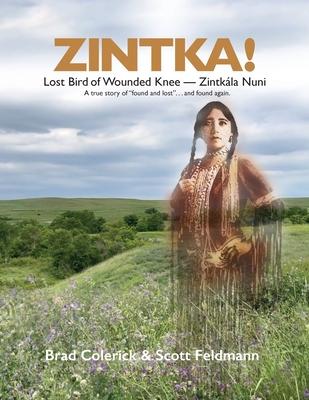A true story of "found and lost" . . . and found again. Zintka! tells the troubled tale of a Native American girl caught between two worlds, accepted by neither. A Lakota (Sioux) baby and her mother who were fleeing for safety became victims in the Wounded Knee Massacre of 1890. The baby was found four days after a South Dakota blizzard, alive by the warmth of her mother's dead body. She was adopted by a prominent soldier and his famous suffragette wife to be raised in their white, high-society circles. Zintka was not accepted there because of racial prejudices in the era of forced assimilation. Neither was she was accepted by her own people when she sought out her roots, in part because she did not speak their language.
Named "Lost Bird" at the moment she was separated from her Lakota caregivers, Zintka was chronicled in newspapers from her discovery to her death. She attempted to succeed in show business, joining Buffalo Bill's Wild West Show, San Francisco's vaudeville circuit and as an extra in Hollywood silent films. Zintka died in the Great Influenza Pandemic of 1918-1920 and was buried in a pauper's grave in Hanford, California. Finally, in 1991 her story was discovered through efforts of her biographer Rene Sansom Flood. Lakota leadership from the Pine Ridge Reservation in South Dakota ceremoniously reburied her at the Wounded Knee Monument, near the mass grave of the disaster, which included her birth mother.
The name "Lost Bird" came to describe Native American children adopted off the reservation by non-Indians after the publication of her biography "Lost Bird: Spirit of the Lakota" (Scribner, 1995).
